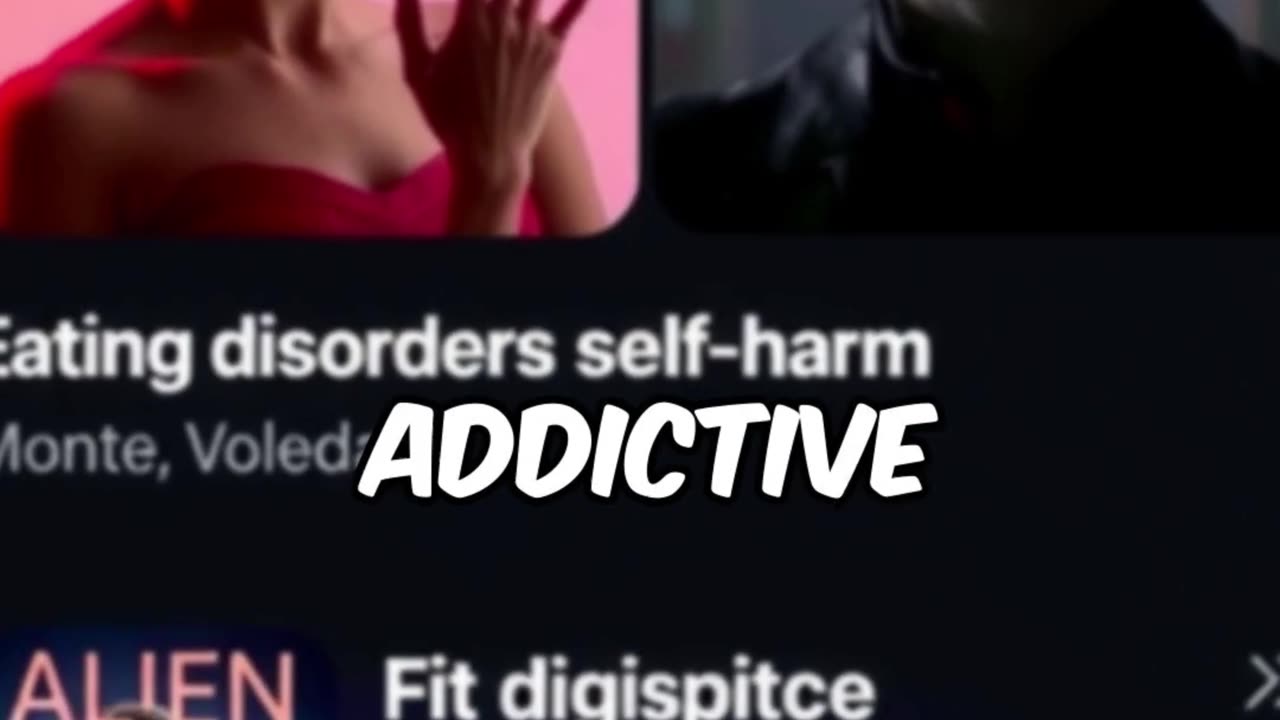Premium Only Content

The Dark Side of TikTok’s Algorithm #TikTok #Algorithm #MentalHealth #SocialMedia #TechEthics
TikTok has rapidly become a global sensation, captivating users with its personalized content delivery system. At the heart of this platform’s success is its sophisticated algorithm, designed to keep users engaged by curating content tailored to individual preferences. However, beneath the surface of this engaging experience lies a darker side, with significant concerns about the algorithm’s impact on mental health, the spread of harmful content, and ethical considerations. The Allure of Personalization TikTok’s algorithm analyzes user interactions—such as likes, shares, watch time, and comments—to create a customized feed known as the “For You Page.” This personalization ensures that users are continually presented with content that aligns with their interests, leading to prolonged engagement. While this tailored approach enhances user experience, it also raises concerns about the potential for addictive behaviors, especially among younger audiences. Exposure to Harmful Content Investigations have revealed that TikTok’s algorithm can inadvertently expose users to dangerous content. Reports indicate that users, particularly teenagers, are being served harmful material related to eating disorders, self-harm, and suicide at alarming frequencies. For instance, a study found that TikTok’s algorithm pushes harmful content to teens every 39 seconds, exacerbating mental health issues among vulnerable populations.  Legal and Ethical Implications The platform’s content curation practices have led to legal challenges worldwide. In France, seven families filed lawsuits against TikTok, alleging that the platform’s algorithm contributed to the suicides of their children by promoting harmful content. Similarly, in the United States, multiple states have sued TikTok, accusing it of harming youth mental health through its addictive features and content recommendations.   Algorithmic Transparency and Accountability A significant concern is the lack of transparency surrounding TikTok’s algorithm. The opaque nature of the content recommendation system makes it challenging to understand the full extent of its impact on users. This opacity hinders efforts to hold the platform accountable for the potential harm it may cause, leading to calls for greater transparency and regulation.  The Need for Responsible Content Moderation While TikTok has implemented measures to moderate content, critics argue that these efforts are insufficient. The platform’s reliance on algorithm-driven content delivery necessitates robust moderation strategies to prevent the spread of harmful material. Without effective oversight, the algorithm can perpetuate negative behaviors and contribute to mental health crises among users. Conclusion TikTok’s algorithm is a powerful tool that drives user engagement through personalized content. However, this same mechanism poses significant risks by exposing users to harmful content and contributing to mental health issues. As the platform continues to grow, it is imperative to address these challenges through increased transparency, ethical content curation, and effective moderation to mitigate the dark side of TikTok’s algorithm. #TikTok #Algorithm #MentalHealth #SocialMedia #DigitalWellbeing #ContentModeration #OnlineSafety #TechEthics #YouthProtection #DigitalResponsibility
-
 LIVE
LIVE
Dr Disrespect
6 hours ago🔴LIVE - DR DISRESPECT - ARC RAIDERS - NEW COLD SNAP UPDATE
1,766 watching -
 19:13
19:13
Neil McCoy-Ward
2 hours agoJapan Just Lit The Fuse (Get Ready...)
1491 -
 1:03:37
1:03:37
Timcast
3 hours agoRepublicans Call For Mass EXPULSION Of Muslims, Travel BAN
159K105 -
 1:14:15
1:14:15
Sean Unpaved
2 hours agoAaron Rodgers & Steelers BOUNCE BACK In WIN vs. Dolphins! | UNPAVED
7.94K3 -
 LIVE
LIVE
Badlands Media
11 hours agoGeopolitics with Ghost Ep. 65 - December 16, 2025
1,360 watching -
 1:49:22
1:49:22
Steven Crowder
5 hours agoCandace & Erika: What The Meeting Really Says About Conservative Media
406K335 -
 16:28
16:28
Adam Does Movies
2 hours ago $0.26 earnedIT: Welcome To Derry Episode 8 Recap - What A Finale!
10.5K -
 LIVE
LIVE
LFA TV
17 hours agoLIVE & BREAKING NEWS! | TUESDAY 12/16/25
2,032 watching -
 1:01:57
1:01:57
VINCE
6 hours agoThis Could Win Us The Midterms | Episode 189 - 12/16/25 VINCE
243K209 -
 1:47:47
1:47:47
The Mel K Show
3 hours agoMORNINGS WITH MEL K- The End of Zero Sum Game Theory Thinking Has Arrived - 12-16-25
27.3K4